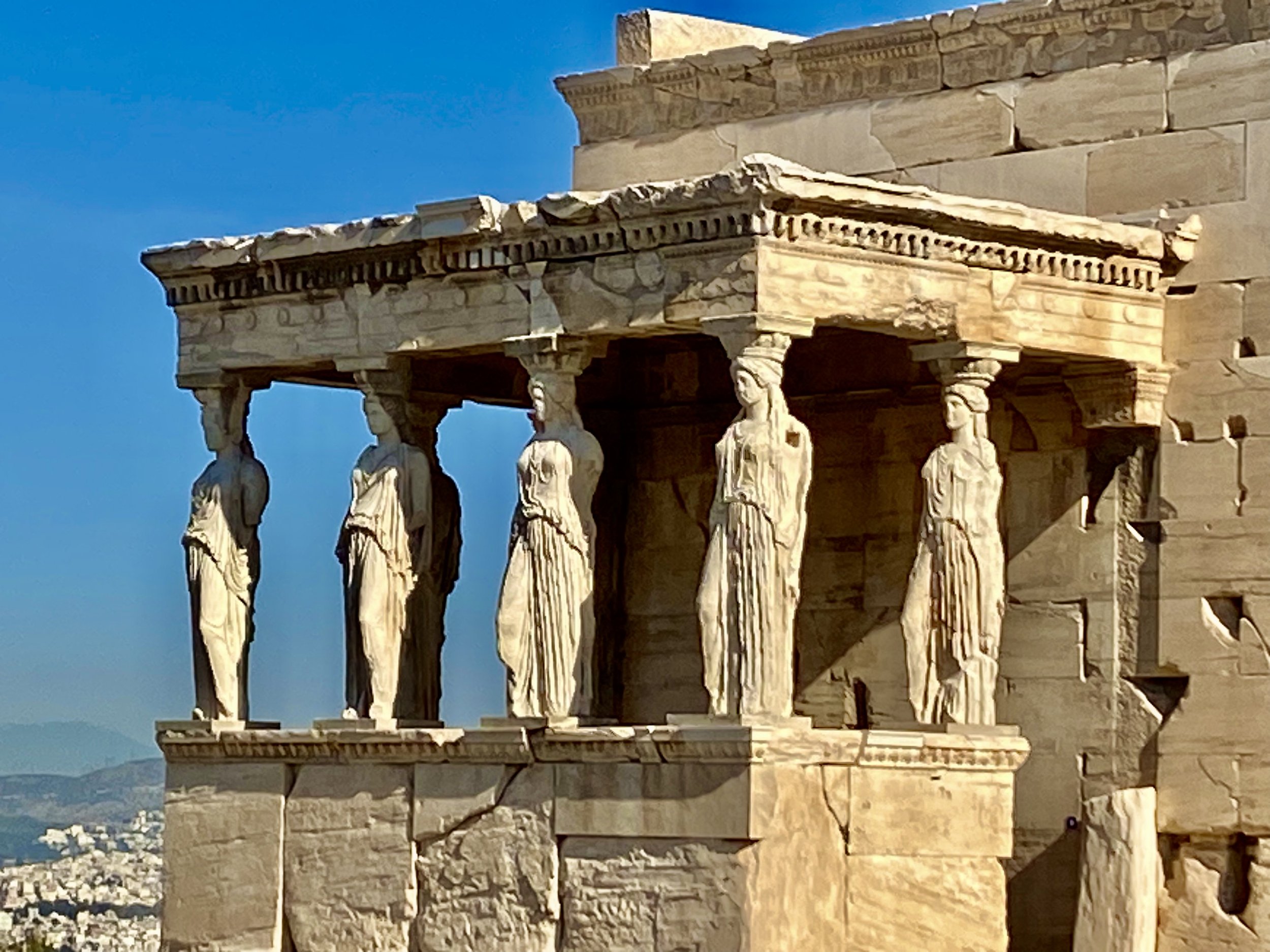A Powerful Feminine Presence in Athens that lives on today…
On our first night in Athens, as my husband and I sat at dinner, we could see the Acropolis (which means literally “High Hill”) lit up and stunning in the distance. The next morning, early, we climbed the hill to tour the buildings and learn about the history.
Acropolis at night from Athens, Photo by Diane Covington-Carter
So much amazing history:
The Acropolis was home to one of the earliest known settlements in Greece, as early as 1300 BC and has been called the cradle of Western civilization.
Over the centuries, the Acropolis has survived bombardment, earthquakes, and vandalism as it shifted in functions from royal residences, homes to the gods and religious centers. It stands as a testament to Greece’s long and rich history.
Within the Acropolis, the ancient religious temple, the Parthenon honors the Greek goddess, Athena.
Myths of Athena and Poseidon:
The myths tell us that both Athena, Goddess of Wisdom, and Poseidon, the God of the Sea, each wanted to claim Athens, to be the patron of Athens. In the contest to see who would prevail, Athena made an olive tree spring from the ground and Poseidon struck the ground with his trident and created a saltwater lake.
Athena’s olive tree offered many gifts, food, olive oil, wood, shade, and oxygen, so she won the contest, decided by the king at that time.
Porch of the Maidens:
The most profound part of the Acropolis for me was the Porch of the Maidens, also called the Caryatids, said to date back to around 400 BC. Six graceful and elegant female figures take the place of columns, their drapery suggesting movement and strength as it falls around their legs. I felt mesmerized looking at those figures and how long they have survived down through the ages, as they balance the roof of the building on their slender necks.
This honoring of the feminine also showed up on our last night in Athens when we visited a kitchen for a cooking demonstration, using recipes from grandmothers and mothers still cherished and enjoyed today.
The Maidens, (the Caryatids) at the Acropolis, Photo by Diane Covington-Carter
The Greek kitchen:
Led by our Greek guide, Yannis, we wound along side streets just as the sun set behind the hills and entered a neighborhood called “Psiri,” in the center of Athens, an area we never would have discovered on our own.
Then up two flights of marble steps, worn down from countless visitors and into the kitchen, where we donned aprons and began to chop and blend to create our supper.
Photo by Diane Covington-Carter
Our class highlighted Mezze, ‘sharing dishes’, which encourages the social aspect of enjoying appetizers and drinks, with friends and family gatherings, using those precious recipes handed down through the generations.
Our Feast:
We created a yogurt dip, Tzatziki, with rich Greek yogurt, of course, grated cucumbers, finely minced garlic, chopped fresh dill, olive oil, white vinegar, and salt.
We prepared and enjoyed tapas of bread topped with bright red grated tomatoes, fresh Greek goat and sheep feta from the island of Lesbos, olives, capers, and dried oregano.
And meatballs, with grated zucchini, pepper, breadcrumbs, grated onion, chopped parsley, mint, dill and cumin, ground beef, salt and pepper, and red wine vinegar. We folded it all like a dough and into small balls, then fried them in an electric fry pan, with the powerful fragrance of the herbs filling the space, and the crackle of the meat cooking in the hot oil.
Our Meatballs Ready to Eat, Photo by Diane Covington-Carter
Our chef/teacher told us stories of learning to cook from his grandmother and how important large family gatherings are in their culture and their lives. On another day, our tour leader’s mother had made spanakopita for us to enjoy on one of our longer drives, so delicious with the fresh spinach and feta and flaky crust, using the recipe she learned from her mother in Crete.
At the end of our class, we enjoyed our sumptuous meal. The Tzatziki tasted tart and yummy with warm pita bread and sliced veggies. The tomato tapas, tangy and so fresh tasting, and the delicious meatballs.
Our finale, we cheered and toasted our efforts and accomplishment with a shot of ouzo before heading out into the vibrant night in Athens.
Some Tips:
I recommend traveling off-season, if possible, October to April, and going early morning or late afternoon to busy sites like the Acropolis. Reading up a bit before you go can be helpful as there is so much to absorb once you are there.
But the most important part of visiting is to feel the magical energy of this place that has survived through the millennia and has represented so many spiritual traditions.
And to feel the power of Athena and those beautiful maidens who represent the power, strength, and beauty of the feminine spirit that has been passed down to us through the millennia.
© Diane Covington-Carter 2023



